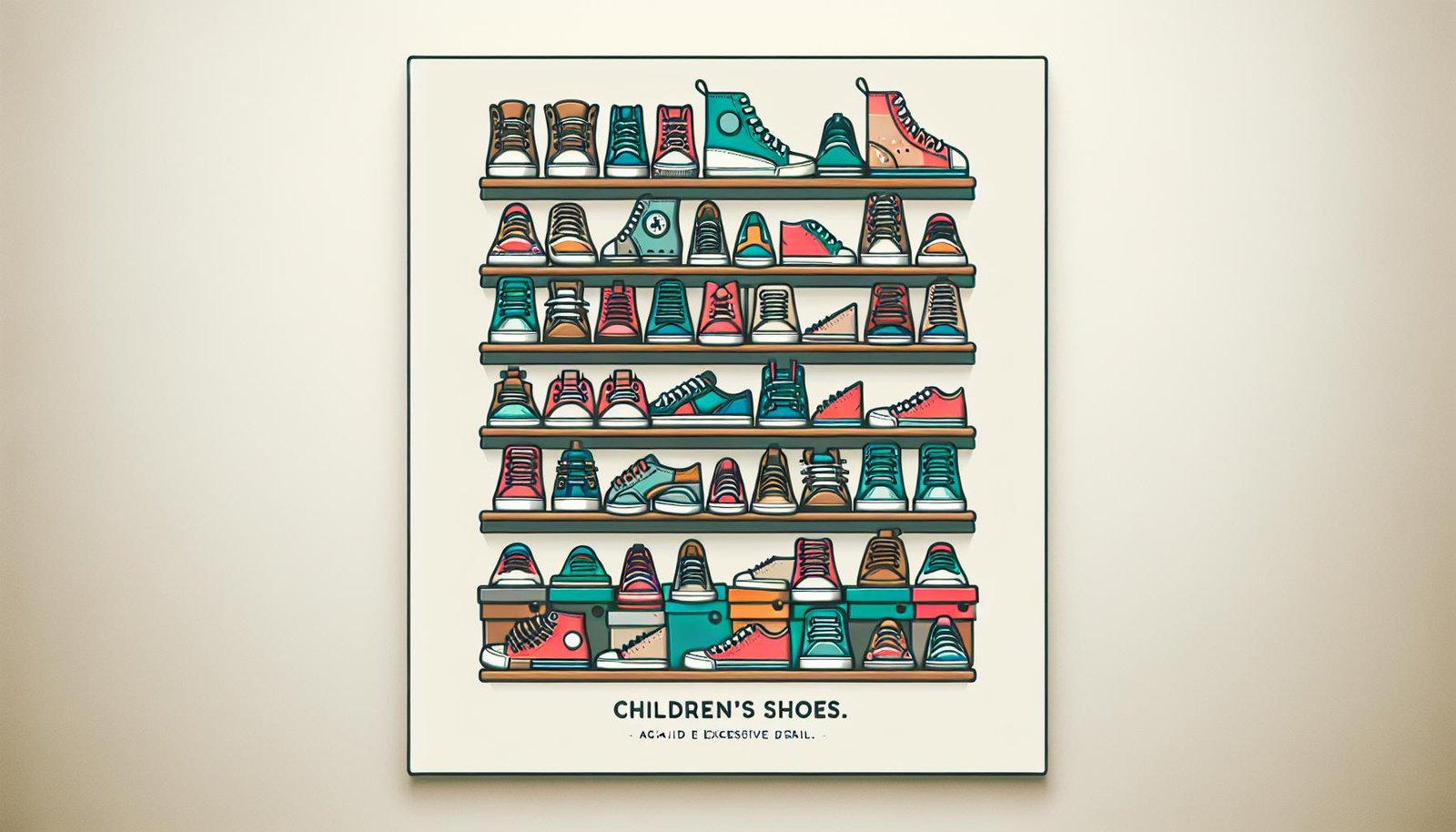Understanding GS Sizes in Shoes: What Does “GS” Mean & Why It Matters
Have you ever wondered about the meaning behind the term “GS” when it comes to shoe sizes? In this article, the mystery behind GS in shoes will be unveiled. GS stands for Grade School, indicating sizes designed for school-aged children typically between 6 to 16 years old. If you’ve ever encountered GS sizes while shopping for shoes and were unsure of their significance, this article will provide you with the clarity you need.
Understanding the concept of GS sizes is essential, especially when selecting the right footwear for your kids. With children constantly growing and needing comfortable and versatile shoes, knowing what GS means can help you make informed decisions. While GS shoes are primarily tailored for grade school students, it’s worth noting that adults can also wear them, making them a versatile option for different age groups.
Stay tuned to explore how GS sizes can play a crucial role in finding the perfect fit for your children’s footwear needs.
Key Takeaways
- GS in shoes stands for Grade School, specifically designed for children between 6 to 16 years old, but can also be worn by adults.
- Sizes can vary across different shoe brands, so refer to specific size charts for accurate fitting.
- GS shoes cater to the growing needs of children’s feet, offering comfort and support during developmental years.
- Transitioning from GS to adult sizes requires understanding size conversions and design differences.
- GS shoes are priced lower than adult sizes due to material usage, production costs, and target market, making them cost-effective for parents.
- When shopping for GS shoes, look for size labeling, numeric range, price variation, unique designs, and specific collections to ensure the right fit and style.
Understanding GS in Footwear
In the realm of footwear, “GS” stands for Grade School. Shoes labeled as GS are specifically designed for children between the ages of 6 and 16. Understanding the significance of GS sizes is crucial when selecting shoes for kids, as these sizes cater to the unique needs of children’s growing feet. Despite being tailored for grade school students, GS shoes are versatile and comfortable, making them suitable for individuals of various age groups.
Variations Across Different Brands
It’s essential to note that GS sizes can vary across different shoe brands. While the concept of Grade School remains consistent, the actual measurements and fits might differ slightly from brand to brand. Some brands may offer wider or narrower options within their GS range, ensuring that children can find shoes that provide optimal comfort and support. Therefore, when shopping for GS footwear, it’s advisable to refer to the specific size charts provided by each brand to ensure a proper fit for your child.
Importance of GS in Shoe Sizing

GS in Children’s Sizes
GS sizes play a crucial role in providing the perfect fit for children’s footwear. Tailored specifically for kids between 6 to 16 years old, Grade School shoes ensure comfort and support during their growing years. As children’s feet grow rapidly, GS sizes accommodate these changes, making them a practical choice for parents looking to save on frequent shoe purchases. By understanding the nuances of GS sizing, parents can confidently select shoes that align with their child’s evolving foot size.
Transitioning to Adult Sizes
While GS shoes are designed for younger wearers, they are not exclusive to children. Adults with smaller feet can also benefit from GS sizes, especially if they seek more affordable options or unique color variations not commonly available in adult sizes. Transitioning from GS to adult sizes requires a clear understanding of the size conversion to ensure a proper fit. By recognizing the differences in width and design between GS and adult shoes, individuals can make informed choices when transitioning to adult footwear while enjoying the cost-effective and stylish aspects of GS shoes.
The Impact of GS on Pricing

Price Differences Between GS and Adult Sizes
GS shoes are generally priced lower than adult sizes. This price discrepancy arises from several factors, including the materials used, production costs, and target market. Since GS shoes are designed for kids and teens aged 6 to 16, they typically require less material, reflecting in a lower cost per pair compared to adult sizes. Additionally, the target market for GS shoes is younger consumers, allowing brands to offer these shoes at a more affordable price point.
Cost-Efficiency for Parents
For parents, opting for GS shoes can provide a significant cost-saving advantage. With children’s feet growing rapidly during the developmental years, investing in expensive adult-sized shoes might not be practical. GS sizes offer a more budget-friendly option while still ensuring that kids have access to stylish and comfortable footwear. The affordability of GS shoes makes it easier for parents to keep up with their children’s changing shoe size requirements without breaking the bank.
How to Identify GS Shoes

Tips for Shopping Online and In-Store
When looking to purchase Grade School (GS) shoes, whether online or in-store, there are specific indicators to help you identify them correctly. Here are some tips to assist you in distinguishing GS shoes:
- Size Labeling: Look for the size label that includes “GS” or “Grade School” designation. This labeling ensures that the shoes are intended for children or individuals with smaller feet.
- Numeric Range: GS sizes usually fall within a particular numeric range, such as 3.5Y to 7Y, with the “Y” indicating Youth sizes. These sizes typically cater to children and teenagers.
- Price Variation: GS shoes are often priced lower than adult sizes due to differences in materials, production costs, and target markets. This cost difference is beneficial for parents looking for affordable footwear options for their children.
- Color and Design: GS shoes may offer unique colorways and designs specific to the youth market. Keep an eye out for vibrant colors or patterns that are commonly associated with GS sizes.
- Specific Collections: Some brands may have specific GS collections or releases, denoting them as Grade School editions. These collections may feature limited editions or collaborations that are popular among younger wearers.
By being aware of these indicators, you can confidently identify and select the right GS shoes, ensuring a proper fit and style for children or individuals with smaller feet. Make use of these tips when shopping to enjoy the benefits that GS shoes provide in terms of affordability and design options.
Understanding Grade School (GS) shoe sizes is crucial for ensuring a proper fit and style for children and individuals with smaller feet. By recognizing the unique features of GS shoes, such as specific labeling, numeric ranges, price variations, and distinctive designs, shoppers can confidently navigate through various brands and collections. Emphasizing the affordability and style options of GS shoes compared to adult sizes, this article sheds light on the benefits of choosing GS footwear. With these insights, individuals can make informed decisions when selecting GS shoes online or in-store, guaranteeing both comfort and fashion for the younger demographic.
Frequently Asked Questions
What are Grade School (GS) shoe sizes?
Grade School (GS) shoe sizes typically range from 3.5 to 7 and are designed for children aged 6 to 16. These sizes provide affordable and stylish options compared to adult sizes, catering to smaller feet.
How can I identify Grade School (GS) shoes?
Look for specific labeling such as (GS) on the shoe box or product description. GS shoes are priced differently from adult sizes, have unique designs often distinct from adult collections, and fall within numeric ranges of 3.5 to 7.
Why should I consider Grade School (GS) shoe sizes?
Understanding GS sizes is essential for ensuring a proper fit for children or individuals with smaller feet. By knowing the characteristics of GS shoes, you can confidently select the right style and size both online and in-store.












